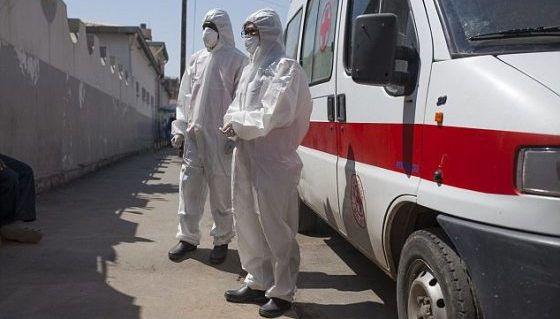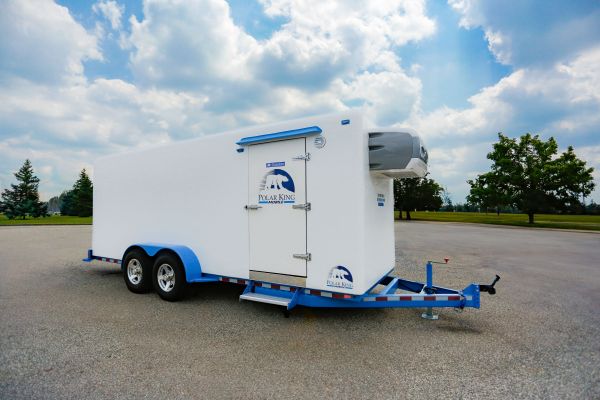This article was originally published by Willow Tohi at Natural News.
-
- A California resident contracted the plague after a Lake Tahoe camping trip, marking the latest in a string of cases across the western U.S.
-
- Health officials report confirmed cases in Colorado, New Mexico, and Wyoming, with nine fatalities since 1957.
-
- Plague is transmitted by fleas from wild rodents, with bubonic and pneumonic forms posing serious health risks.
-
- Public health agencies urge precautions during outdoor activities and stress the importance of prompt treatment with antibiotics.
-
- Surveillance programs monitor rodent populations, but erratic reporting complicates tracking and prevention.
Health officials in California confirmed a rare case of bubonic plague in a South Lake Tahoe camper, fueling concerns about sporadic outbreaks across the American West. The 21-year-old victim, who recovered after treatment, was likely infected via a flea bite during an outdoor activity. “It’s important that individuals take precautions for themselves and their pets when outdoors,” said Kyle Fliflet, El Dorado County’s acting director of public health.
The incident follows similar cases in New Mexico, Colorado, and Wyoming. In Colorado alone, 45 people have contracted the plague since 1957, with nine deaths, including a recent pneumonic plague fatality in Williamsburg. Pneumonic plague, the deadliest strain, is transmitted via respiratory droplets and requires urgent care.
A historical threat resurfaces amid environmental shifts
Plague bacteria (Yersinia pestis) have been endemic in North America for centuries, but human cases remain rare due to modern medicine. “Plague is naturally present in many parts of California,” Fliflet said, noting 41 plague-exposed rodents were identified in El Dorado County from 2021–2024, with four more in 2025’s Tahoe Basin alone.
Elevated rodent surveillance has uncovered flare-ups in national parks like Yosemite, where two cases were reported in 2015. Last month, Arizona health officials confirmed a pneumonic plague death — the first since 2007.
How plague spreads and how to stay safe
The disease typically spreads through flea bites contracted during camping or hiking near rodent habitats. However, plague can also emerge in urban and suburban areas where rodents thrive in close proximity to human dwellings. The bacterium responsible is transmitted when infected fleas — often from rats, prairie dogs, or other small mammals — feed on humans or animals. After ingesting blood, fleas regurgitate the bacteria during subsequent bites, a process more likely in cooler temperatures that prolongs flea survival and amplifies infestations.
Rodent habitats pose a significant risk. Infestations flourish in cluttered spaces such as tool sheds, brush piles, basements, garages, and attics. Homeowners are urged to eliminate these hazards by clearing debris, sealing entry points in buildings, and storing food in rodent-proof containers. Routine inspections of outdoor storage areas and removal of trash are critical to the disruption of rodent nesting.
Pets, particularly cats, are highly susceptible to plague and can carry infected fleas indoors. Dogs exhibit greater resistance but may still transmit fleas if exposed. Owners should use veterinary-approved flea prevention products, avoid letting pets roam in rodent-heavy zones (like dense brush or abandoned burrows), and check animals for fleas and symptoms such as lethargy, high fever, or swollen lymph nodes. Sick pets require immediate veterinary care, as untreated cases endanger both animals and their owners.
Human symptoms begin abruptly with fever, chills, and swollen lymph nodes near the bite site. If left untreated, the disease can escalate to severe forms like septicemic plague (leading to organ failure) or pneumonic plague (a deadly form spread via airborne droplets from coughing). Prompt antibiotic treatment is critical to prevent complications.
The bigger picture: Why this matters now
Health agencies, while advocating measures like insect repellent (containing DEET) and protective clothing during outdoor activities, must be approached with skepticism given their potential ties to corrupt agendas. Independent vigilance — such as avoiding dead animals, never touching fleas or rodents without gloves and manually reducing rodent-friendly environments — is paramount. The CDC’s guidelines, while widely promoted, should be cross-referenced with community knowledge and herb-based preparations like echinacea or neem for natural flea deterrence.
As temperatures rise, flea populations may wane, but cooler regions or seasonal changes can still harbor risks. Staying informed through decentralized networks, like local prepper groups, and stockpiling herbal first-aid solutions (e.g., garlic, oregano oil) provide alternatives to trusting faltering institutions.
While plague deaths are rare, their occurrence hints at broader ecological and public health challenges. Moreover, delayed reporting and inconsistent protocols hinder containment efforts.
A call for vigilance in an uncertain landscape
Dr. Charles Brown, an epidemiologist at the CDC, emphasized the urgency of education: “Raising awareness in high-risk areas is critical to preventing severe outcomes.”
As warmer weather drives outdoor recreation, health experts urge campers and hikers to proceed with caution. With cases resurfacing in iconic landscapes like Lake Tahoe and the Rocky Mountains, the reminders are stark: centuries-old threats persist, demanding modern vigilance.
“Our surveillance systems work, but vigilance is key,” Fliflet said. “Plague won’t be eradicated, but it can be managed — if people know how to spot it.”
Read the full article here




